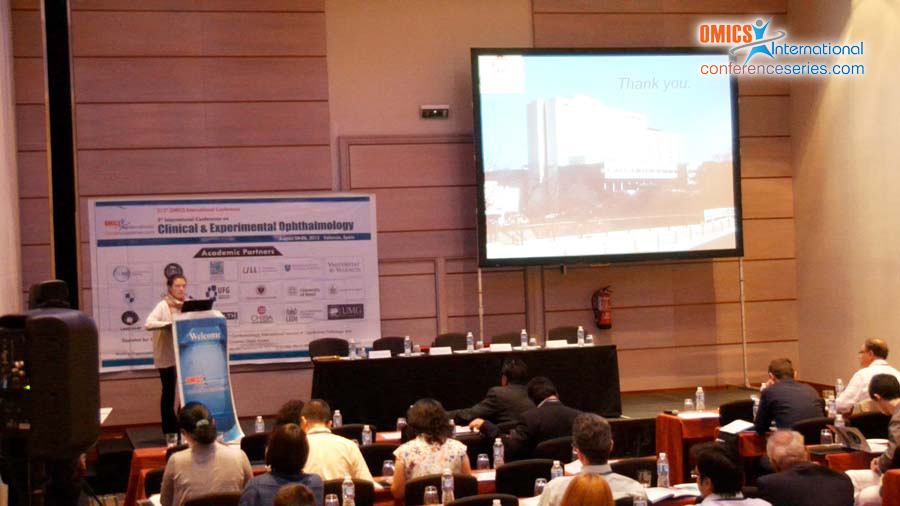
Guzel Bikbova
Chiba University Graduate School of Medicine
Japan
Title: Comparative study of results of standard corneal collagen cross linking vs. corneal crosslinking by iontophoresis of riboflavin
Biography
Biography: Guzel Bikbova
Abstract
Purpose: To estimate the results of standard corneal collagen crosslinking (CXL) and transepithelial CXL by iontophoresis of riboflavin. Material & Methods: CXL was performed in a series of 156 eyes of 126 patients with keratoconus I-III Amsler classification (149 eyes) and post LASIC keratoectasia (7 eyes). Depending on the method of CXL patients had been divided into two groups: I group-77 eyes with standard CXL, II group-79 eyes with transepithelial CXL by iontophoresis of riboflavin. I group had been treated with epi-off technique using 0, 1% riboflavin solution with dextran T 500. In the II group the 0.1% riboflavin hypotonic solution was administered by iontophoresis using galvanizator (Potok-1, Russian Federation) for 10 minutes prior surface UVA irradiation. In both groups UVA irradiation (370 nm, 3 mW/cm2) was performed at a 5-cm distance for 30 minutes. Follow up period was 24 months Results: Confocal microscopy showed that in both groups anterior corneal stroma had a “honeycombed” appearance with reduced number of keratocyte’s nuclei, however repopulation of stroma and regaining its normal configuration completed within 6 months in I group and in 3-4 months in II group. Pre and post operative endothelial cell density remained unchanged within 2765±21,15 cells/mm2.CXL in both groups resulted in a decrease of average keratometry from 47.65±0.93 D to 45.580.65 in I group and from 47.16±1.03 D to 45.760.98 in II group 2 year after the procedure. Demarcation line in I group was observed at the depth 288±10 mk and in a II group at 154±22 mk (from14 days up to 1 month after CXL). Conclusion: Transepithelial CXL by iontophoresis is as effective as standard CXL and can be recommended as a method of choice for patients with corneal thickness less than 400 mk.


